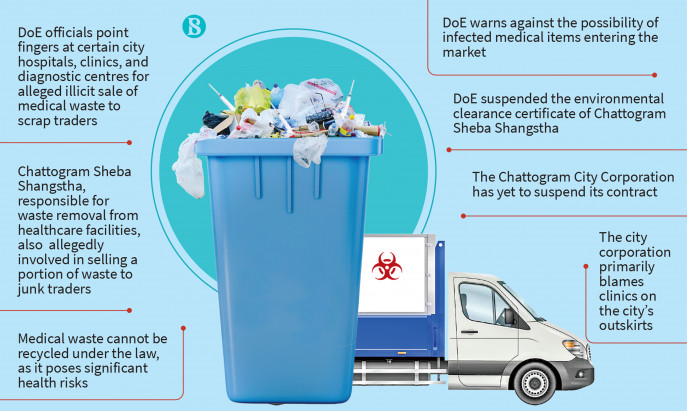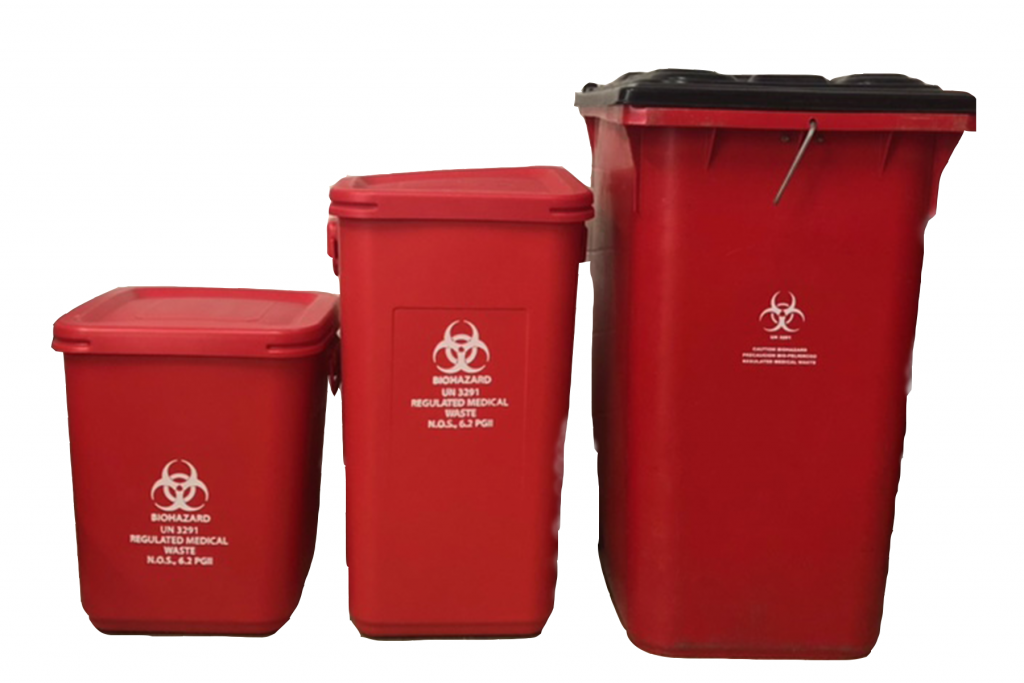Beyond Cleanup: Ensuring Security with Expert Medical Waste Removal
Wiki Article
Stay Ahead of Laws: Specialist Advice on Medical Waste Disposal
In a globe where the medical care industry is continuously advancing, it is necessary for medical facilities to stay ahead of guidelines when it involves the proper disposal of clinical waste. With rigorous guidelines and frequent regulatory adjustments, it can be challenging to browse the intricacies of this process. With skilled suggestions, centers can make certain conformity and minimize threats connected with incorrect waste disposal. From comprehending the different classifications of medical waste to applying the right collection and partition approaches, this conversation will certainly supply important insights and actionable pointers to aid centers remain ahead of policies in the ever-changing landscape of clinical waste disposal.Comprehending Medical Waste Categories
Comprehending medical waste categories is essential for correct disposal and monitoring in health care facilities. Clinical waste refers to any waste generated by health care activities that might pose a hazard to public health or the environment. It is crucial to classify clinical waste accurately to guarantee its secure handling, transport, treatment, and disposal.There are numerous categories of clinical waste that health care centers require to be familiar with. The most usual classifications consist of infectious waste, pathological waste, sharps waste, pharmaceutical waste, and chemical waste. Each classification has certain standards and regulations for its appropriate management and disposal.
Contagious waste includes products infected with blood or various other bodily fluids, such as gloves, dress, and research laboratory societies. Pathological waste refers to human tissues, organs, or body components that call for unique handling and disposal. Sharps waste consists of used needles, syringes, and various other sharp items that can trigger injury and send infections. Drug waste makes up run out, unused, or polluted medications that require mindful handling and disposal. Chemical waste consists of solvents, anti-bacterials, and various other chemical compounds utilized in healthcare facilities.
Staying Up-To-Date With Regulatory Changes
Remaining existing with regulative modifications is critical for medical care centers to make sure compliance and proper administration of medical waste disposal. medical waste removal near me. With guidelines regularly progressing, it is crucial for health care facilities to remain updated to prevent penalties, fines, and possible damage to the environment and public wellnessTo stay ahead of regulatory adjustments, health care facilities need to establish a system for surveillance and tracking updates. This can be done by signing up for regulative e-newsletters, participating in workshops and meetings, and proactively taking part in industry associations. In addition, centers need to designate a personnel participant or group in charge of staying educated and disseminating information to relevant stakeholders.
Normal interaction with regulatory firms is also essential. Health care facilities should develop connections with local, state, and federal agencies to guarantee they know any kind of adjustments in regulations that might impact their waste management practices. This can be done with regular conferences, participation in public comment periods, and aggressive engagement with regulative companies.
In addition, healthcare centers ought to take into consideration partnering with waste management companies that specialize in medical waste disposal (medical waste disposal services with WasteX). These companies are typically fluent in the most recent policies and can supply support and assistance to ensure conformity
Carrying Out Proper Collection and Segregation Techniques
To successfully take care of medical garbage disposal, healthcare centers should develop appropriate collection and partition approaches based on regulatory guidelines. Carrying out these approaches makes sure the secure handling and disposal of possibly hazardous products, secures the environment, and lessens the risk of infections and injuries to healthcare workers and i thought about this the basic public.
Proper collection and segregation approaches include making use of assigned containers and labeling systems. Health care centers need to provide plainly identified containers for different types of medical waste, such as sharps, transmittable waste, pharmaceutical waste, and non-hazardous waste. These containers need to be color-coded and clearly marked to avoid complication and advertise simple identification.
In addition, healthcare facilities must educate their team on the proper procedures for accumulating and segregating clinical waste. This includes informing them on the various sorts of waste, the suitable containers to use, and the significance of following guidelines and regulations. Regular training sessions and correspondence course must be performed to make sure that personnel continue to be up-to-date on best methods.
Furthermore, health care facilities ought to establish a system for regular collection and disposal of medical waste. This may involve partnering with certified waste management companies that focus on medical waste disposal. These firms will certainly ensure that the accumulated waste is transferred and taken care of in compliance with regulative requirements.
Choosing the Right Disposal Techniques

Incineration is one of one of the most efficient and typical approaches for disposing of specific types of clinical waste, such as pathological waste and sharps. It includes the controlled burning of waste at high temperature levels, minimizing it to ash. Incineration can release dangerous toxins right into the air and add to air contamination.

Other disposal techniques consist of chemical treatment, microwave therapy, and landfilling. Chemical treatment navigate to these guys entails the use of chemicals to decontaminate and reduce the effects of the waste. Microwave treatment utilizes microwave energy to warm and sanitize the waste. Landfilling includes burying the waste in a designated land fill location (medical waste disposal services with WasteX). Landfilling should be the last resort due to the prospective danger of contamination to dirt and groundwater.
Making Sure Conformity Through Documents and Training
After thoroughly considering the proper disposal techniques for clinical waste, health care facilities have to guarantee conformity with policies and lessen ecological effect by applying efficient paperwork and training treatments. This step is vital in preserving a secure and sustainable environment for both healthcare employees and the general public.
Healthcare workers who deal with medical waste must get proper training on waste partition, managing, and disposal treatments. By giving comprehensive training, healthcare facilities can empower their staff to make informed choices and minimize the threat of click site inappropriate waste disposal.
Conclusion
To conclude, staying in advance of laws in clinical garbage disposal is critical for healthcare facilities. medical waste removal. Understanding the various groups of clinical waste, staying upgraded with regulative modifications, executing proper collection and partition approaches, selecting the appropriate disposal methods, and guaranteeing compliance via paperwork and training are all vital steps. By adhering to these standards, healthcare organizations can properly handle and dispose of medical waste in a secure and accountable wayFrom understanding the various classifications of clinical waste to carrying out the ideal collection and partition approaches, this discussion will offer useful understandings and workable suggestions to aid centers remain ahead of guidelines in the ever-changing landscape of clinical waste disposal. - medical waste disposal services with WasteX
The most typical classifications include infectious waste, pathological waste, sharps waste, pharmaceutical waste, and chemical waste. Health care centers must offer plainly classified containers for various kinds of medical waste, such as sharps, infectious waste, pharmaceutical waste, and non-hazardous waste. Medical care facilities ought to develop a thorough system to videotape and track all aspects of medical waste disposal, including kinds of waste created, amounts, and disposal approaches made use of. Medical care employees that take care of clinical waste should receive suitable training on waste segregation, dealing with, and disposal procedures.
Report this wiki page